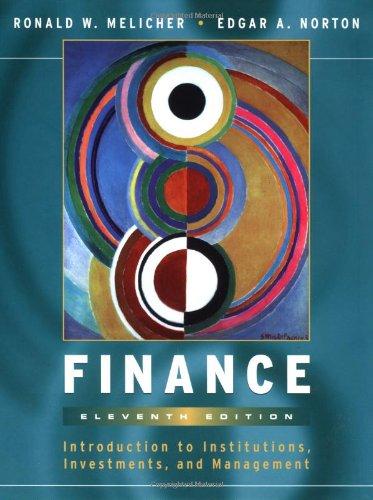3. Xonics Graphics, Inc., is evaluating a new technology for its reproduction equipment. The technology will have a four-year life, will cost $1,000, and will have an impact on cash flows that is subject to risk. Management estimates that there is a forty-sixty chance that the technology will either save the company $2,000 in the first year or save it nothing at all. If nothing at all, savings in the last three years would be zero as well. Even here there is some possibility that in the second year and fourth year an additional outlay of $600 would be required to convert back to the original process, for the new technology may decrease efficiency. Management attaches a 25 percent probability to this occurrence if the new technology "bombs out" in the first year. If the technology proves itself in the first year, it is felt that second-year cash flows will be $2,600, $3,400, and $1,500, with probabilities of 0.35, 0.50, and 0.15, respectively. In the third year, cash flows are expected to be either $300 greater or $250 less than the cash flow in period 2. with an equal chance of occurrence. In the fourth year, cash flows are expected to be $375 greater than the cash flow in period 3. NOTE: PLEASE SHOW HOW YOU COMPUTE EACH OF THE ITEMS. a) Set up a tabular version of a probability tree to depict the cash-flow possibilities. (10p) b) Calculate a net present value for each of the four-year possibilities, discount rate: 5% (10p) c) Calculate the expected value of net present value for the project. (5p) a) What is the risk of the project? (5p) 3. Xonics Graphics, Inc., is evaluating a new technology for its reproduction equipment. The technology will have a four-year life, will cost $1,000, and will have an impact on cash flows that is subject to risk. Management estimates that there is a forty-sixty chance that the technology will either save the company $2,000 in the first year or save it nothing at all. If nothing at all, savings in the last three years would be zero as well. Even here there is some possibility that in the second year and fourth year an additional outlay of $600 would be required to convert back to the original process, for the new technology may decrease efficiency. Management attaches a 25 percent probability to this occurrence if the new technology "bombs out" in the first year. If the technology proves itself in the first year, it is felt that second-year cash flows will be $2,600, $3,400, and $1,500, with probabilities of 0.35, 0.50, and 0.15, respectively. In the third year, cash flows are expected to be either $300 greater or $250 less than the cash flow in period 2. with an equal chance of occurrence. In the fourth year, cash flows are expected to be $375 greater than the cash flow in period 3. NOTE: PLEASE SHOW HOW YOU COMPUTE EACH OF THE ITEMS. a) Set up a tabular version of a probability tree to depict the cash-flow possibilities. (10p) b) Calculate a net present value for each of the four-year possibilities, discount rate: 5% (10p) c) Calculate the expected value of net present value for the project. (5p) a) What is the risk of the project? (5p)







